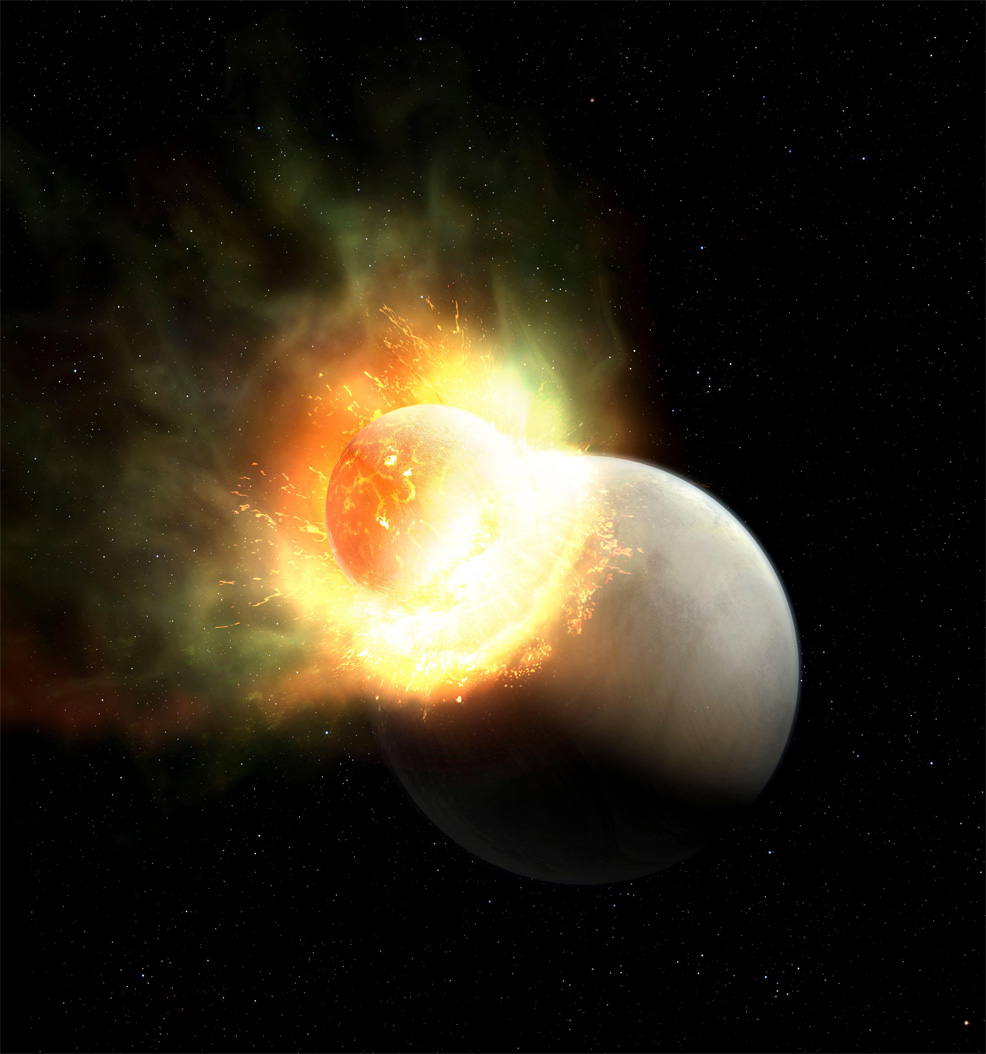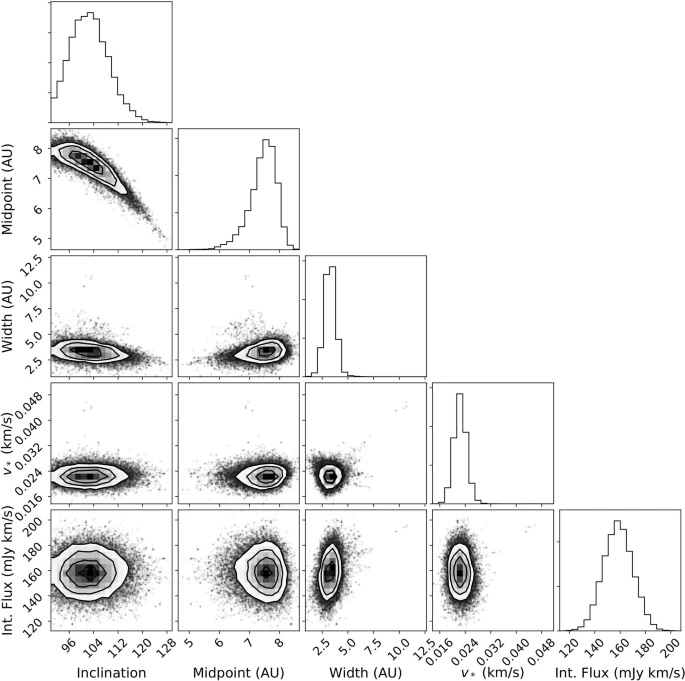
24th October 2021 Giant impact stripped away exoplanet's atmosphere Astronomers led by the Massachusetts Institute of Technology (MIT) have found evidence of a giant impact between an Earth-sized exoplanet and a smaller body, which stripped off part of one planet's atmosphere.
The event occurred in HD 172555, a system located 95 light years from Earth. This contains a hot and bright A-type star, with twice the mass and 9.5 times the luminosity of our own G-type Sun. Due to its unusual composition of dust, including grains that are much finer than expected for a typical stellar debris disk, scientists have long suspected that a major collision took place there in the recent past. HD 172555 is relatively young in astronomical terms at 23 million years old and may therefore resemble the chaotic state of the early Solar System. Such impacts, although believed to be common in young systems, are difficult to observe around other stars. However, the MIT-led team performed a detailed analysis using the Atacama Large Millimeter Array (ALMA) in Chile, the world's most advanced radio telescope. From this data, they uncovered a clear signal within the gas and dust, indicating that a high-speed impact likely blew away part of the larger planet's atmosphere. Their research, the first detection of its kind, appears this month in the peer-reviewed journal Nature. "This is the first time we've detected this phenomenon, of a stripped protoplanetary atmosphere in a giant impact," said Tajana Schneiderman, lead author and a graduate student in MIT's Department of Earth, Atmospheric and Planetary Sciences. "Everyone is interested in observing a giant impact because we expect them to be common, but we don't have evidence in a lot of systems for it. Now we have additional insight into these dynamics."
Credit: Schneiderman, et al. / Nature (2021)
The ALMA, which consists of 66 telescope dishes, can be adjusted to increase or decrease the resolution of images. The team used the ALMA to look for signs of carbon monoxide (CO). "When people want to study gas in debris disks, carbon monoxide is typically the brightest, and thus the easiest to find," said Schneiderman. "So, we looked at the carbon monoxide data for HD 172555 again because it was an interesting system." Schneiderman's team detected CO amounting to 20% of the concentration found in Venus' atmosphere. They observed the gas to be circling in large amounts and closer to the star than expected, at between 6 and 9 astronomical units (AU), or roughly equivalent to the orbits of Jupiter and Saturn. CO is typically vulnerable to photodissociation, a process in which a star's photons break down and destroy the molecule. At close range, there would typically be very little CO around a star. So, the team explored various scenarios to explain the gas' abundant, close-in appearance. They quickly ruled out a scenario in which the gas arose from the debris of a newly formed star, as well as one in which the gas emerged from a close-in belt of icy asteroids. They also considered a scenario in which many icy comets had streaked in from a far-out asteroid belt, like our own Kuiper belt. But the data didn't fit this scenario either. The team considered one final scenario: the gas being a remnant of a giant impact. "Of all the scenarios, it's the only one that can explain all the features of the data," she explained. "In systems of this age, we expect there to be giant impacts, and we expect giant impacts to be really quite common. The timescales work out, the age works out, the morphological and compositional constraints work out. The only plausible process that could produce carbon monoxide in this system in this context is a giant impact." The team estimates that the gas emerged from a giant impact that occurred approximately 200,000 years ago – the blink of an eye in astronomical terms and recent enough that the star would not have had time to completely destroy the gas. Based on the abundance of CO, the impact was likely massive and involved two proto-planets comparable in size to the Earth. The impact was so great that it likely blew off part of one planet's atmosphere, in the form of the gas that can be observed today. "Now there's a possibility for future work beyond this system," said Schneiderman. "We are showing that, if you find carbon monoxide in a place and morphology consistent with a giant impact, it provides a new avenue for looking for giant impacts and understanding how debris behaves in the aftermath." "What is particularly exciting about this work, in my opinion, is that it demonstrates the importance of atmospheric loss by giant impacts," said Hilke Schlichting, Professor of Earth, Planetary, and Space Sciences at the University of California at Los Angeles, who was not involved in the research. "It also opens up the possibility to study the composition of the atmospheres of extrasolar planets undergoing giant impacts, which ultimately may help shed light on the atmospheric condition of the terrestrial planets during their own giant impact stage." Planetary collisions are some of the most dramatic events in nature. Our own Moon is believed to have formed as a result of the impact between the early Earth and a hypothesized, Mars-sized planet called Theia, which flung enormous amounts of material into orbit. When Earth and this rogue body collided, the explosion produced 100 million times more energy than the much later event that wiped out the dinosaurs. Last year, researchers from Durham University and the University of Glasgow, both in the UK, used a supercomputer called Cosmology Machine (COSMA) to simulate various objects colliding with an Earth-like planet. They calculated that between 10 and 50% of the atmosphere would be stripped away, depending on the angle and speed of impact. These simulations, consisting of 100 million particles, can be viewed below.
Comments »
If you enjoyed this article, please consider sharing it:
|








